Capsule Review: SteelSeries Apex M500 Gaming Mechanical Keyboard
by E. Fylladitakis on June 10, 2016 10:00 AM EST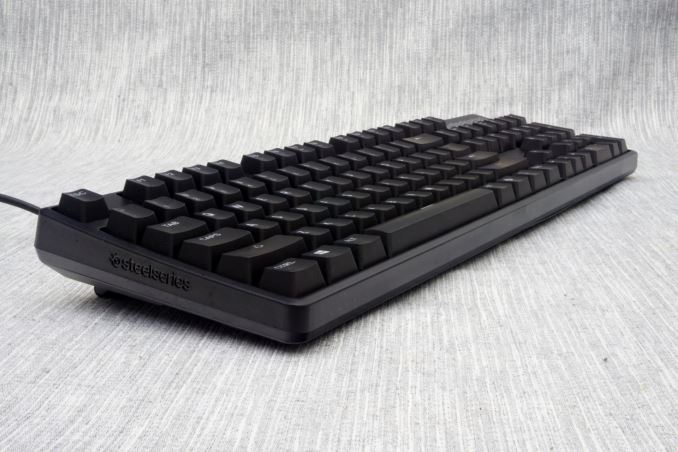
SteelSeries is one of the most reputable manufacturers of gaming-related peripherals and software. The company originates from Denmark and today has offices in the US and Taiwan. Even so, the company was a little late into the mechanical keyboards market, as they opted to focus on advanced membrane-based keyboards instead. Until recently, the company has been offering just one mechanical keyboard, the Apex M800 with their own custom QS1 switches.
The high price and, perhaps, the use of switches from an “unknown” source did do any favors for the popularity of the Apex M800, but it still had its own distinct user base. SteelSeries however is a company who is largely based and focused around the gaming community, so they rightfully felt that they ought to have at least one mechanical keyboard designed solely for hardcore and professional gamers. To that end, SteelSeries recently released the Apex M500, a high performance no-frills mechanical keyboard designed exclusively with that market group in mind.
Packaging and bundle
We received the Apex M500 in a very strong cardboard box that can withstand even the roughest of transportation services. The artwork is relatively simple, based on abstract geometrical shapes and a picture of the keyboard itself. Inside the box we only found the keyboard itself, protected inside a simply nylon bag. SteelSeries does not supply any additional parts, such as a wrist rest, extra keycaps or a keycap remover.
The SteelSeries Apex M500 Mechanical Gaming Keyboard
The designer of the SteelSeries Apex M500 truly tried to make it as simple and straightforward as possible. The body of the keyboard is plastic, with narrow rounded edges, and is sprayed with a matte black paint that is highly resistant to fingerprints. It is a standard 104-key ANSI layout keyboard with a 6.25× Spacebar and seven 1.25× bottom row keys. The keycaps are made from ABS plastic and have large, smooth characters. The company’s logo is printed at the top right corner of the keyboard, above the numpad.
Although there are no extra buttons on the Apex M500, a few additional functions are supported via the FN key that is replacing the right Windows key. While the FN key is being held pressed, the F5-F6 keys provide backlight brightness control and the F7-F12 keys offer basic media and volume controls. Other than that, the Apex M500 is just a standard 104-key keyboard. We would like to have seen at least a separate mechanism for sound volume control, but as a compromise of sorts the Apex M500 is a fully programmable model, so the user can reprogram any of the standard keys to perform such functions if that is a necessity.
For some strange reason, the designer tried to make the bottom of the Apex M500 aesthetically appealing. The plastic body forms an abstract, modern design, based on simple polyhedral shapes with rounded edges. A large, full company logo is engraved on the top left side of the keyboard’s underside. The rubber anti-skid pads are thick and very effective, providing very strong grip even on the most slippery solid surfaces. There are grooves for the routing of the cable to exit from either the center, left or right top side of the keyboard.
SteelSeries decided not to use proprietary switches on the Apex M500. The company went with the proven and very reputable Cherry MX switches instead. There currently is only one version of the Apex M500 available, with Cherry MX Red switches and blue LEDs. These switches are typically considered to be the best for gaming due to their linearity and low actuation force.
The blue backlighting of the Apex M500 is very strong and even. Blue lighting can be tiring for the human eye and the Apex M500 is blindingly bright at maximum intensity, so users will have to reduce it significantly for use inside dark rooms.
After we removed the plastic frame of the Apex M500, all that is left is the main PCB permanently attached on the blue steel frame that is supporting the keys. This is the standard and proven design of most mechanical keyboards, providing excellent mechanical cohesion and durability. The soldering job is excellent, with no flaws that we could find.
ST Microelectronics supplies the STM32F072R ARM microprocessor that is the heart of the Apex M500. It is a high performance 32-bit microcontroller with a maximum frequency of 48 MHz and 64KB of integrated Flash memory.


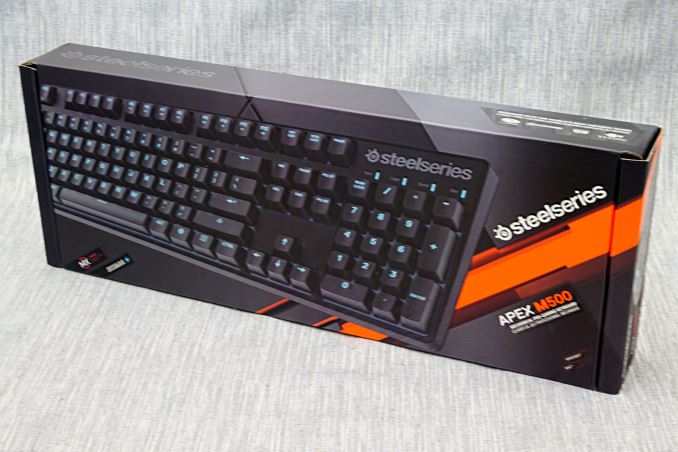
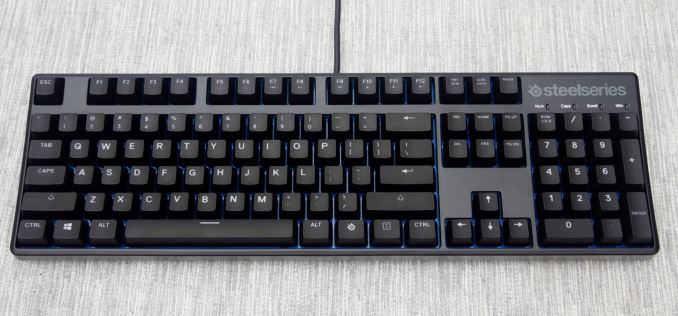
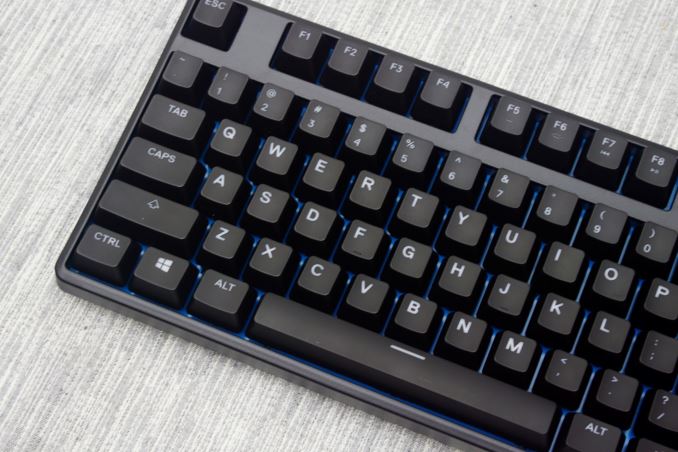
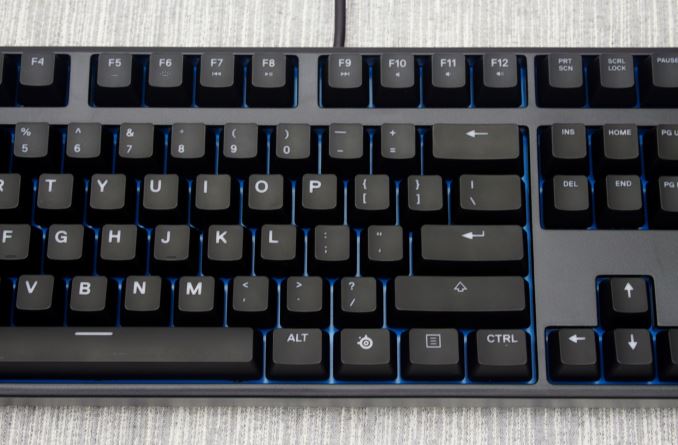
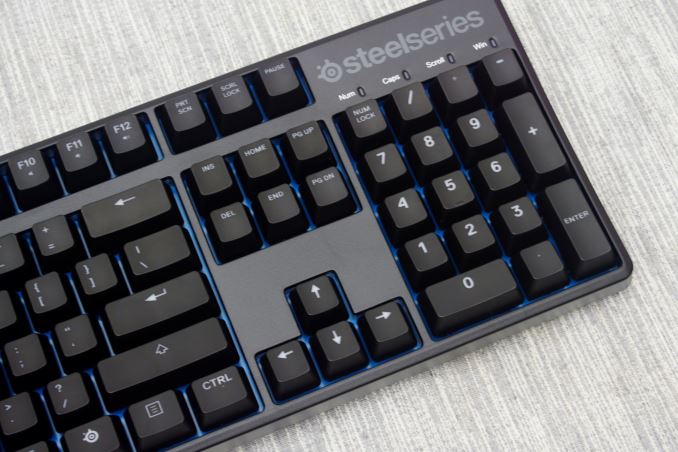
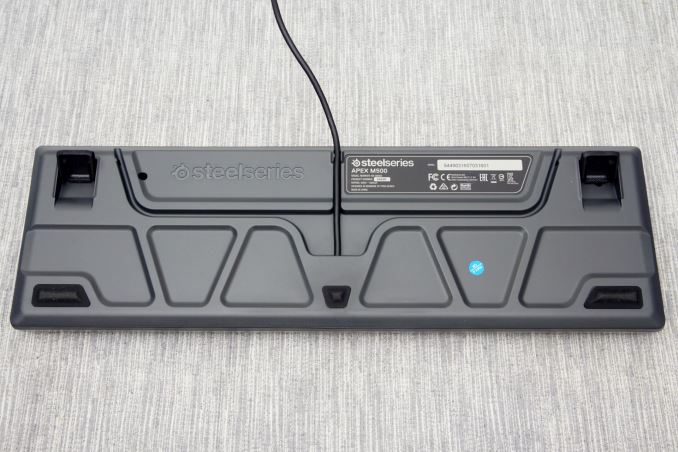


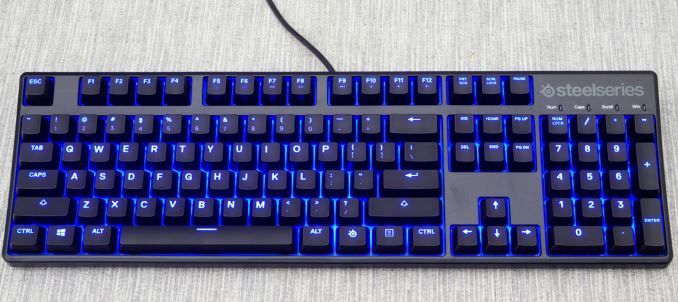
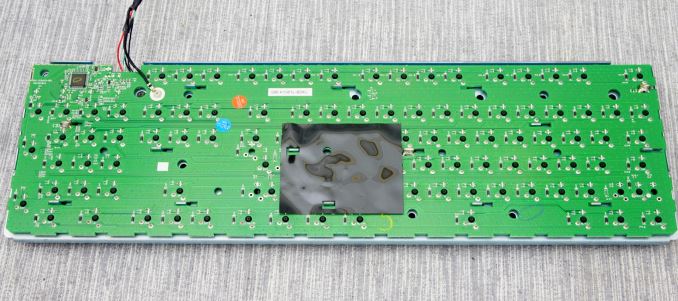
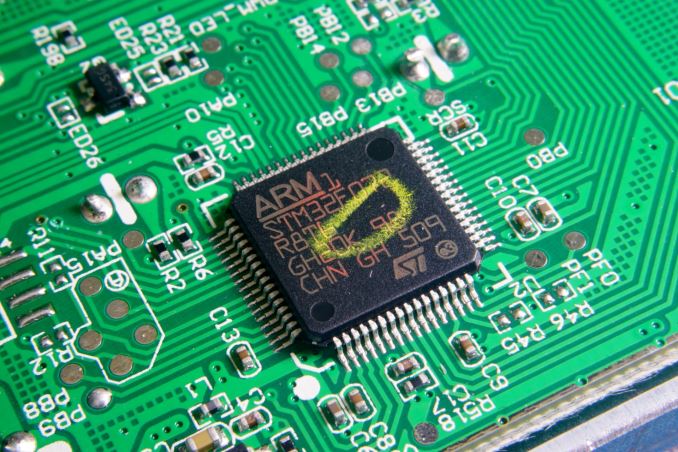








60 Comments
View All Comments
MamiyaOtaru - Sunday, June 12, 2016 - link
*edit* more like 6 years ago (been a while anyway). Was the 7g. Fortunately the packaging was clear so I could see the layout before opening it. Yeah I'd seen pictures of it on the web, but I just figured they were shots of the board meant for non-US distribution. Nope!Samus - Monday, June 13, 2016 - link
Some people prefer a carriage return with a reduced backspace/backslash, others prefer an "enter" key with extended backspace/backslash keys.In the USA, the later is most common. But a few companies have historically favored the carriage return over the enter key, especially in Asian markets.
The joke in IT has always been the Asian markets don't need such a large backspace key because they make fewer mistakes ;)
kaidenshi - Friday, June 10, 2016 - link
A reverse-L shaped Enter/Return key pushes the backslash/pipe key either up into the Backspace key's area (making the Backspace smaller and highly error prone -- backslashes typed instead of characters backspaced), or else below the Enter/Return, cutting the right Shift key in half.Of the two, I'd prefer below, but in practice I never buy a keyboard with a reverse-L Enter/Return key. I like my full size Backspace and R-Shift, and I like my Pipe where muscle memory says it should be for piping *nix commands.
bigboxes - Sunday, June 12, 2016 - link
Fully agree. I can understand ddriver's penchant for an enlarged Enter key. However, I hate small backspace keys and definitely prefer the ANSI layout. I've got a couple of Cherry keyboards (one Chinese/one US) and both have the ANSI layout. I would consider myself a heavy typer (MX Blue user here).colinstu - Friday, June 10, 2016 - link
A large US enter key = a tiny backspace key, which SUCKS. EU keyboards have a two row enter key in a slightly different shape & the backspace maintains its normal/large size.TomSal74 - Wednesday, June 15, 2016 - link
To each their own but since I'm so used to the (size/shape) of the enter key on this keyboard it honestly doesn't bother me (or hinder my gaming performance or comfortable in any way I might add).Olaf van der Spek - Friday, June 10, 2016 - link
Wouldn't a TenKeyLess version or one with the numpad on the left make (more) sense for hardcore gamers?JoeyJoJo123 - Friday, June 10, 2016 - link
Really depends on the keyboard layout someone wants and is comfortable with.Some people use the numpad for keybinds or macros. Others use a multi-button "MMO" type mouse. Some people _always_ use the numpad for any number typing.
inighthawki - Friday, June 10, 2016 - link
Due to a really old and bad habit I play many FPS games using the arrow keys and the numpad provides some keys which are convenient for miscellaneous functionality.In addition, I also do a lot of programming and I almost always use the numpad for numeric entry. I find it far more convenient.
Given that the numpad isn't really that large, it always struck me as odd that so many people are so passionate about finding a keyboard specifically without it - buying something that specifically has less functionality to save a few inches of desk space. To each their own - that's why we have variety!
Death666Angel - Saturday, June 11, 2016 - link
"Due to a really old and bad habit I play many FPS games using the arrow keys and the numpad provides some keys which are convenient for miscellaneous functionality."That reminds me of my starting days! 12 years old, brand new Pentium III 500MHz computer with an Nvidia TNT 2 M64 model, which barely played Half-Life at 800x600. It was my whole pride, because I paid for it with all the money I'd earned and saved up at that point. A friend of mine brought over this game called Half-Life and was gushing all over it. He changed the key bindings to fit the arrow keys and the surrounding keys for crouching, jumping etc. So I grew up with that. It was years later that I saw the superiority of WASD. :D